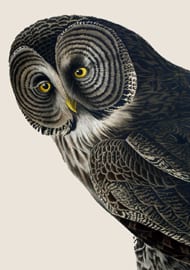
- This event has passed.
John James Audubon’s Birds of America, Vol.IV

Designed by Art 275: Jessica Davidson, Jessica Miely, Emily Shutt.
John James Audubon’s Birds of America, an unusual nineteenth century work in four volumes, is an important part of Lehigh University’s extensive rare books collection. On view is Volume IV, demonstrating how Audubon’s hybrid of science and art, ornithology and printmaking, makes him one of the most celebrated scientific naturalists of all time.
John James Audubon was born on April 26, 1785 in Las Cayes, Haiti, the illegitimate son of a Frenchman and his mistress, a native of Las Cayes. After a childhood spent in France, Audubon was sent to his father’s estate in Norristown, Pennsylvania, where he became skilled at hunting and drawing birds. Ornithology, the study of birds, became a passion for Audubon, and he created an impressive portfolio of drawings.
As a young man, Audubon set off on an epic quest to pursue his dream of painting and documenting all of the American birds. Audubon aspired to draw the birds life-sized and in full color. This endeavor was without precedent in the history of American Ornithology. Audubon used his skills to shoot the birds, wire them, and prop them into life-like positions as models for his paintings.
Failing to find an engraver in America who would take on the large task of creating a multi-volume work, Audubon sailed to Liverpool, England in May of 1826 with his massive portfolio. Upon displaying some of his paintings there, Audubon received much praise and attention. A subscription book was made for The Birds of America, an invaluable method for books with limited market potential. The plates were in sets of five, which subscribers would then bind themselves once they had a complete set.
Audubon changed his engraver in 1827 from William Lizars to Robert Havell in London. Audubon was able to keep a close watch over Havell’s work and together they succeeded in printing all 435 plates by 1838. The final Double Elephant Tolio of The Birds of America contained 497 species in four volumes. Today there are only 175 to 200 complete copies of the set in the world, one belonging to Lehigh University.
THE GREAT CINEREOUS OWL, also kno
wn as the Great Grey Owl, is of the genus Syrnium Cinereum, or Strix nebulosa. It is the largest of the North American species. It is found from the northeastern coast of America to the Columbia River. It has been spotted near Eastport, Maine and Marblehead, Massachusetts. The small size of the bird’s eyes indicates that it hunts by day and its small feet and claws suggests that it does not prey on large animals. This owl stays primarily in the woods and hunts when the sun is low; it is at this time of day that the woods are heavily shadowed and prey such as the Am-erican hare and small birds are clearly visible. Audubon’s representation is of a female, and he noted that among the Great Cinereous Owls he observed, they varied greatly in size and markings, which may be attributed to differences in age and gender. In a particular nest of these owls, Audubon observed, the young were kept in the nest for two months; then they made their escape. Similar to other owls, the young had the habit of throwing themselves back and making a loud snapping noise with their bills when anyone entered into the room in which they were kept.